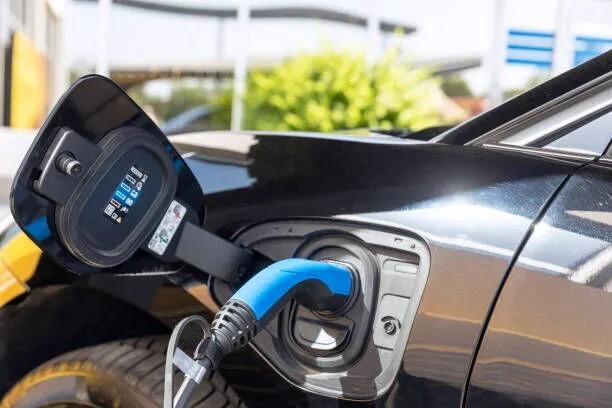Notifications

8 minutes, 33 seconds
-17 Views 0 Comments 0 Likes 0 Reviews

Electric vehicles (EVs) are revolutionizing transportation by providing a cleaner, quieter, and more sustainable alternative to traditional gasoline-powered vehicles. However, to optimize efficiency, minimize costs, and lessen the burden on the electrical grid, it’s essential to know the best times to charge your EV. This article will explore the different EV charging levels and the most suitable times for charging.As a trusted EV chargers manufacturer in China, Topper Company delivers dependable electric vehicle charging station equipment and comprehensive solutions.
Charging an electric vehicle is not as straightforward as filling up a gas tank; it requires some planning. There are three main levels of EV charging, each offering different speeds and setups. Here’s a breakdown of each:
Level 1 charging utilizes a standard household outlet, providing 120 volts of power. This is the most accessible charging method, using the typical three-prong plug found in most homes. The connector on the vehicle side plugs directly into the car.
While Level 1 charging is convenient, it is the slowest option. It can take anywhere from 8 to 12 hours to fully charge an EV, depending on the vehicle and battery size. This makes Level 1 charging best suited for overnight charging or for EV owners with low daily mileage. It’s particularly ideal for plug-in hybrids or those with modest charging needs.
Level 2 charging uses a 240-volt outlet, similar to the kind used for large household appliances like clothes dryers. With Level 2, most EVs can charge fully within 3 to 6 hours, depending on battery size and the charger's amperage.
Installing a Level 2 charging station at home may require upgrading your electrical panel or wiring, which comes with additional costs. However, the convenience of faster charging speeds makes it a great option for regular EV users. Level 2 chargers are also common in workplaces, public stations, and shopping centers, offering a practical solution for mid-day charging.
DC fast chargers are the fastest option, capable of recharging an EV in 30 to 60 minutes. These stations use direct current (DC) to charge the battery quickly, making them perfect for long-distance trips or when you need a rapid boost.
Public fast-charging stations are often located along major highways, at workplaces, or in urban centers. However, not all EVs are compatible with DC fast chargers, and the connectors may differ by manufacturer. Common connector types include CHAdeMO, SAE J1772 Combo (CCS), and Tesla’s Supercharger system.
While DC fast chargers are incredibly convenient, frequent use can cause battery wear over time, so it’s best to reserve them for occasional or emergency use.
With the growing adoption of electric vehicles, understanding the best times to charge can help you save on costs, ease grid strain, and maximize the use of renewable energy. Below are key factors to consider:
Electricity prices fluctuate throughout the day based on demand. In most regions, electricity is most expensive during the late afternoon and evening (typically from 4 p.m. to 9 p.m.), when people return home, and appliances are heavily used. Charging your EV during these peak hours can lead to higher electricity bills and contribute to grid congestion.
In contrast, off-peak hours offer lower electricity rates. Charging your vehicle during these times not only saves money but also helps alleviate the strain on the electrical grid.
Overnight Charging (After 10 p.m.) Nighttime charging is often the most cost-effective choice. With lower electricity demand after 10 p.m., many utility companies offer discounted rates for EV owners who charge at night. Charging overnight ensures your vehicle is ready with a full battery in the morning while taking advantage of lower energy costs.
Mid-Day Charging (10 a.m. to 2 p.m.) In regions with abundant solar power, mid-day charging can be an excellent option. Solar energy production peaks during these hours, providing a cleaner and more affordable energy source. Charging during this time helps balance the grid and maximizes renewable energy usage.
Utilize Time-of-Use (TOU) Rates Many utility companies offer Time-of-Use (TOU) plans that incentivize charging during off-peak times by offering lower rates. Check with your local utility provider to see if you’re eligible for such programs.
Install a Smart Charger Smart chargers can automatically charge your EV during off-peak hours. These devices connect to your home’s Wi-Fi and allow you to monitor energy usage while optimizing charging times for cost savings.
Charge Only What You Need Avoid fully charging your EV if it’s not necessary. For daily driving, it’s often sufficient to charge up to 80% of the battery. This reduces wear on the battery and helps extend its lifespan. Save full charges for long trips.
Plan for Public Charging When using public charging stations, try to plug in during off-peak hours, if possible. This can help you avoid additional fees that some networks impose during high-demand periods.
Charging your EV at optimal times isn’t just about saving money—it also has a significant environmental impact. Off-peak charging reduces the reliance on fossil fuel-based power plants, which are often used to meet peak demand. It also enables utilities to integrate renewable energy sources like solar and wind into the grid. By charging during times when clean energy is abundant, you can help reduce your carbon footprint and contribute to a more sustainable future.
Choosing the best time to charge your electric vehicle involves a balance of convenience, cost, and environmental benefits. Overnight charging after 10 p.m. is typically the most economical, but mid-day charging can be beneficial in areas with high solar energy production. Avoid charging during peak demand hours to reduce your electricity bills and ease grid strain.
As the EV market expands, technological advances in smart charging and grid infrastructure will continue to make EV ownership more efficient and eco-friendly. By adopting smart charging habits, you can maximize the potential of your electric vehicle while supporting a cleaner, more sustainable energy future.Know more about Google SEO Directory
China EV Chargers EV Charger Manufacturer EV Charging Solutions

